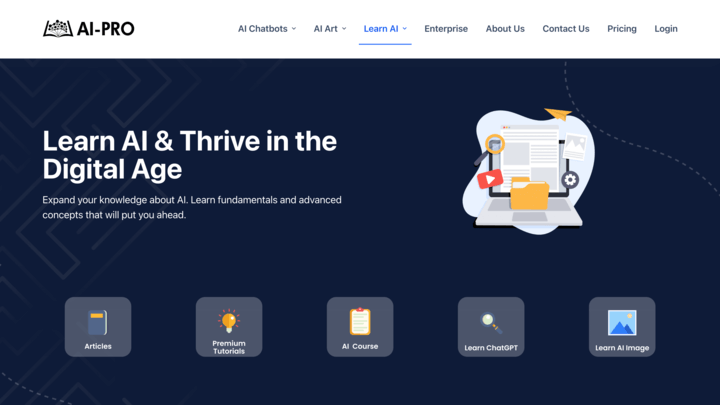Imagine having a conversation with your smartphone and it not only understands your words but responds in a way that feels almost human. This capability is made possible by natural language processing (NLP), a fascinating branch of artificial intelligence that enables machines to interpret and interact with human language. From voice assistants like Siri and Alexa to automated customer service chatbots, NLP is the technology that bridges the gap between human communication and computer understanding.

In this article, we’ll demystify NLP by breaking it down into simple terms, explaining how it works, and showcasing its wide array of applications. Whether you’re curious about how your favorite digital assistant comprehends your commands or how the technology is revolutionizing industries, this guide will provide a clear and comprehensive overview of this pivotal AI technology.
What is Natural Language Processing (NLP)?
Natural Language Processing, often abbreviated as NLP, is a specialized field within artificial intelligence dedicated to enabling computers to understand, interpret, and generate human language. At its core, NLP strives to bridge the gap between human communication and machine understanding, allowing for seamless interactions between people and technology.

NLP encompasses two main components: Natural language understanding (NLU) and natural language (NLG). NLU involves the computer’s ability to comprehend and extract meaning from text or speech. This includes parsing sentences to grasp their grammatical structure and determining the intent behind the words. NLG, on the other hand, focuses on the computer’s ability to produce human-like text based on the data it processes, such as generating responses in a conversation or summarizing information.
To put it simply, NLP enables machines to perform tasks that require understanding language in a way that mimics human comprehension. Unlike traditional language processing, which might involve straightforward keyword searches or rule-based systems, NLP employs advanced algorithms and models to handle the complexity and nuance of human language. This includes dealing with variations in phrasing, context, and even emotions, making it a powerful tool for creating more interactive and intuitive technology.
In essence, NLP allows computers to move beyond basic command processing and engage in more natural and meaningful exchanges with users. This capability is transforming how we interact with technology, making our digital experiences more fluid and human-like.
[H2] How Does Natural Language Processing (NLP) Work?
Understanding how NLP works involves diving into its key processes and technologies, which enable machines to analyze and respond to human language effectively. Here’s a simplified breakdown of how the technology operates:
1. Text Preprocessing
The initial step is called the preprocessing stage and involves preparing raw text for analysis through tasks such as:
- Tokenization: Breaking down text into smaller units, such as words or sentences, to facilitate analysis.
- Normalization: Converting text to a standard format, including lowercasing and removing punctuation, to ensure consistency.
- Stopword Removal: Eliminating common words (like “the” or “and”) that may not contribute significant meaning to the analysis.
2. Parsing and Understanding
Once the text is preprocessed, the next step is to interpret its meaning, which involves:
- Syntactic Analysis: Examining the grammatical structure of sentences to understand the relationships between words. Techniques such as part-of-speech tagging and dependency parsing are used to build a syntactic structure.
- Semantic Analysis: Determining the meaning behind the words and sentences. This includes identifying named entities (like names and locations) and understanding context and intent.
3. Feature Extraction
In this stage, important characteristics and patterns are extracted from the text. This might involve:
- Vectorization: Converting words or phrases into numerical vectors that represent their meanings in a way that algorithms can process. Techniques such as Term Frequency-Inverse Document Frequency (TF-IDF) or Word Embeddings (like Word2Vec or BERT) are commonly used.
4. Model Training and Application
With features extracted, the next step is training the following models to understand and generate language:
- Machine Learning Models: Using algorithms such as logistic regression, support vector machines, or neural networks to learn from text data. These models are trained on large datasets to identify patterns and make predictions.
- Deep Learning Models: Leveraging complex neural networks, including recurrent neural networks (RNNs) and transformers, to capture intricate patterns and context in text. These models can handle tasks like language translation and text generation with high accuracy.
5. Generating Responses
Finally, NLP systems generate human-like text or responses based on the processed information.
- Natural Language Generation (NLG): NLG systems can create coherent and contextually relevant text based on the analyzed data and produce outputs such as responses, summaries, or even creative content.
By combining these processes, NLP systems are able to perform a wide range of language-related tasks, from translating languages and answering questions to summarizing texts and generating content.
The Applications of Natural Language Processing (NLP)
Natural Language Processing (NLP) has a profound impact across various sectors, transforming how we interact with technology and process information. Here are some key applications:

NLP is embedded in many of the tools and services we use daily. One prominent example is virtual assistants like Siri, Google Assistant, and Alexa. These systems rely on NLP to understand spoken commands, manage tasks, and provide relevant responses. For instance, when you ask your virtual assistant to set an alarm or provide weather updates, NLP processes your request and delivers the desired action or information.
Another common application is email filtering. Email services utilize NLP to automatically categorize messages into folders such as Primary, Social, or Promotions. By analyzing the content of your emails, NLP algorithms can detect spam, sort messages based on relevance, and even suggest automatic responses.
In more specialized fields, it enables groundbreaking advancements. For example, sentiment analysis tools leverage the technology to evaluate public opinion by analyzing social media posts, reviews, and feedback. This technology helps businesses understand customer sentiments and improve their products or services based on real-time insights.
In healthcare, it is used for analyzing medical records and research papers to assist in diagnosis and treatment planning. By extracting relevant information from patient data and medical literature, NLP tools support healthcare professionals in making informed decisions and advancing medical research.
Additionally, language translation services like Google Translate use it to convert text from one language to another, facilitating communication across linguistic barriers. This application involves understanding the context and nuances of both the source and target languages to provide accurate translations.
These applications demonstrate NLP’s ability to enhance both everyday interactions and specialized tasks
Expand Your AI Knowledge!
Natural Language Processing (NLP) is a transformative technology that brings us closer to seamless interactions between humans and machines. Its ability to understand and generate human language enhances our digital experiences, making technology more intuitive and accessible. From the virtual assistants that help us manage daily tasks to sophisticated systems analyzing medical records, NLP’s impact is profound and far-reaching.

As NLP continues to evolve, its applications will only expand, driving further innovation and improving how we communicate with and utilize technology. To delve deeper into the world of AI and understand more about crucial terminologies like NLP, visit AI-Pro’s AI terms glossary for comprehensive resources and insights. Explore how these technologies are shaping the future and discover how they can benefit you.




